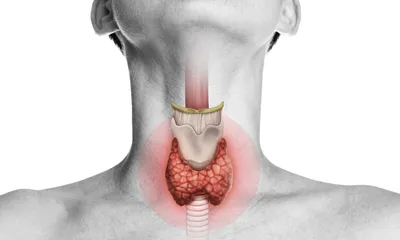IPF
-
Description
-
Signs & Symptoms
-
Anatomy
-
Cause
-
Diagnosis
What is Idiopathic Pulmonary Fibrosis?
Idiopathic pulmonary fibrosis is a lung disease and causes severe breathing difficulties for affected individuals when fibroid (scar tissue) buildup in the lungs makes the organs unable to transport enough oxygen into the bloodstream. The scar tissue forms around alveoli - air sacs in the lung that fill with oxygen each time a person inhales. The thin walls of the alveoli are especially susceptible to harm from the thickness and fibrous nature of the scar tissue.
Idiopathic pulmonary fibrosis is usually progressive for people, meaning it becomes worse over time. The breathing problems experienced by sufferers may get to the point that they need an assisted breathing device to not die from them. There is ongoing research into idiopathic pulmonary fibrosis treatment, but as of now there is no cure, and the only option is a maintenance approach for those with IPF.
What Causes Idiopathic Pulmonary Fibrosis?
Idiopathic means the exact cause of a condition is not definitively known. With idiopathic pulmonary fibrosis the medical community consensus is that it is environmental in nature and is developed based on what a person inhales into their lungs. There are known risk factors for idiopathic pulmonary fibrosis. Notable ones are cigarette smoking, and hepatitis or herpes infections. Epstein-Barr virus may also lead to developing IPF.
GERD (gastrointestinal esophageal reflux disease) may also factor into idiopathic pulmonary fibrosis. The explanation there is that people with GERD may be breathing small amounts of refluxed stomach acid into their lungs. There is also a genetic predisposition component for IPF, meaning a greater chance of idiopathic pulmonary fibrosis if a parent or grandparent has had it.
Idiopathic Pulmonary Fibrosis Symptoms
Breathing difficulty will always be the most primary of idiopathic pulmonary fibrosis symptoms, but sufferers may also be experiencing joint and muscle ache, chest pain or tightness, appetite loss, leg swelling, excessive tiredness, unexplained weight loss, or clubbing – a term for when the tips of your toes or fingers get wider. IPF may cause a person to make a crackling noise in their airway when they exhale.
Idiopathic pulmonary fibrosis symptoms can mirror ones seen with tuberculosis, so it is going to be best to obtain a proper medical diagnosis if you are experiencing them. This will usually be with a chest X-ray scan but can also be done with pulse oximetry testing.
Idiopathic Pulmonary Fibrosis Treatment
The most conventional approach to idiopathic pulmonary fibrosis is to have the person on Rx medications that can slow the growth of fibroid scar tissues in the lungs like Esbriet or Ofev. A doctor may suggest supplementing with oxygen therapy treatment to make breathing easier and prevent complications from low oxygen levels.
Pulmonary rehabilitation is possible if they see it as potentially helping with the management of idiopathic pulmonary fibrosis. This can involve physical exercise, breathing techniques, nutritional counseling, and emotional counseling and support.
Signs & Symptoms
- Breathing difficulty
- Joint and muscle ache
- Chest pain or tightness
- Appetite loss
- Leg swelling
- Excessive tiredness
- Unexplained weight loss
- Clubbing (widened tips of toes or fingers)
- Crackling noise in airway during exhalation
Anatomy
- Lungs
- Alveoli
- Airway
- Bronchi
- Pulmonary vessels
Cause
- Cigarette smoking
- Hepatitis infections
- Herpes infections
- Epstein-Barr virus
- GERD (gastroesophageal reflux disease)
- Genetic predisposition
Diagnosis
- Chest X-ray scan
- Pulse oximetry testing
- Lung function tests
- High-resolution CT scan
- Bronchoscopy
- Lung biopsy



